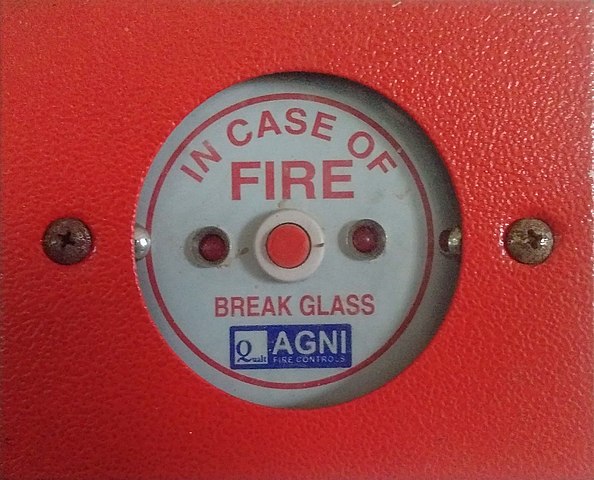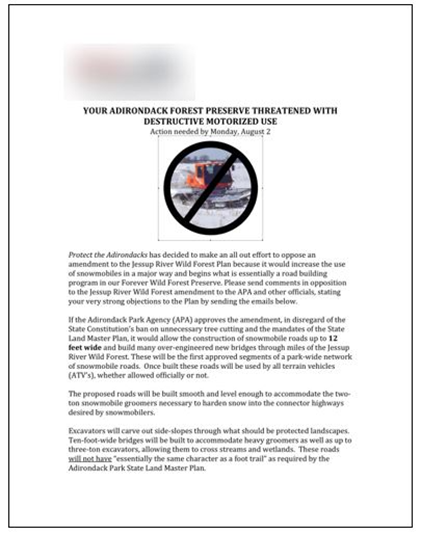
Every grassroots campaign needs a basic call-to-action that clearly and dramatically summarizes your issue. You cannot have a serious campaign without one. Your alert should be compelling, well-written, accurate, and persuasive; and must contain a wealth of information condensed into one page.
Your alert should give a brief background explaining what you want people to do so anyone with no prior knowledge of the issue has enough information to:
- grasp the issue,
- know why it is important that they act, and
- understand what specific action you want them to take: phone, write, fax, email, attend a meeting, etc.
Your alert should include names, addresses and phone numbers, so people know where to write and who to call.
The best brains and most creative eyes in your campaign must be involved in crafting your alert because presentation is important. Once created, it can be revised slightly to serve a variety of needs: a press release, a meeting handout, or a poster to announce public meetings. If possible, get someone with graphic artist capabilities to choose the fonts and do the layout. It should be in color that is easily transferred to grayscale or black-and-white, so it can be photocopied.
A good alert takes data and converts it into information, then takes that information and presents it as interesting information. Alerts highlight, from all the things there are in the world, the one thing you want people to pay attention to. Then it shows them how to think about that one thing. The principles governing the creation of an alert are like those of flower arranging—the final product is elegant. It stands alone, complete, and needs nothing else to be understood. The alert shown below was used in a campaign in the Adirondacks against the expansion of snowmobile roads within the park.
(The exhibits in this essay can be viewed full size at: https://www.britell.com/documents/)

DEVELOPING THE SIGN-ON LETTER
A “sign-on letter” which carries signatures of multiple environmental organizations, carries more weight than one from a single group because it shows many organizations are working together from a common position. The example below is from a successful campaign that prepared a sign-on letter from 30 groups, sent it to the decision-makers, then added graphics and ran it as a full-page newspaper ad.
Sign-on letters put decision-makers on notice—lets them know that their actions are widely observed. They are particularly useful when a decision-maker begins proposing illegal or bad ideas, is in transition, or is vulnerable to outside pressure. It is most effective against entities that haven’t received much prior public criticism from environmentalists. Sign-ons can persuade formerly good agencies to change their ways when they start to go astray.
Sign-ons work best where the fix is not in, the agency is not corrupt, and the public’s mind is open or on your side. Sign-ons can bring new or emerging problems to the attention of regional or state environmental groups, identify which are on your side, and establish critical first contacts. Sign-ons work best when most environmental organizations in an area agree on what should be done. But even when local groups don’t get along, they probably agree on actual policy most of the time. Where they do agree and a sign-on is required, they should temporarily bury the hatchet to appear united.
For example, a sign-on letter might be a good tool if a small county with a new convention center sued a land management agency to give ATVs access to long closed roads in a wilderness. A letter with signatures from national groups in large metropolitan areas might dissuade them—especially if the publicity alarmed the county’s business, economic development and tourism interests.
Sign-on letters are less useful where bad agency practices are longstanding and enjoy wide public support. A sign-on letter opposing illegal federal lands logging in Idaho or abusive public lands grazing practices in Utah might create good PR for the targeted federal agencies.
In a campaign to stop a rural Oregon county seeking to remove protections for the western snowy plover and open ocean beaches and dunes to ATVs, a three-state, 30 organization sign-on letter was prepared and distributed to the county commissioners. Then graphics and a response form were added and it ran as a full-page ad (shown below) in the main newspaper in the county.
The sign-on letter was initiated by a rural volunteer organization that called environmental organizations in three states soliciting sign-ons. A reference website for the campaign was created by a second Oregon organization which contained all the legal documents, news stories and detailed analysis of the issue for the sign on groups to use with their boards. A third organization in Washington state assembled the final letter and acted as lead organization. And a fourth in Southern California donated a lawyer to approve the text of the letter and ad.
Some strong snowy plover and beach protection advocates in all three states refused to sign onto this letter. This is expected, as in any campaign the unique circumstances of a particular group may preclude its public support at a particular time. Of course, some environmental organizations won’t cooperate with certain other groups no matter what is involved. An important part of the plover sign-on letter is the list of county commissioners that included the thought leaders and elected officials in the region.
When the campaign began, most of them supported lifting plover protections since it was presented as a way to attract more ATVs to the coast from urban areas. But as the sign-on was distributed, local governments and Chambers of Commerce began revoking endorsements— some quite publicly. A few worried we would launch a boycott—the nightmare scenario regional business promotion interests fear above all else. This campaign was a success. The county failed to increase ATV access to Oregon beaches and the county commissioner who promoted the idea was subsequently voted out of office. The population of western snowy plovers in Oregon subsequently quadrupled.
Since groups at a distance may not be familiar with your issue, it is a good idea to set up a website for the campaign.
If you begin a letter and there are Audubon and Sierra Club organizations in your area, ask them to sign on first. If you don’t, distant regional groups or state umbrella organizations will wonder why. It is far better to say they refused and explain their reasons than not to have even asked. Groups are willing to sign letters even if other groups refuse, but might balk if they think they are unwittingly taking sides in a local intra-organizational conflict. Local Audubon organizations (called chapters) are often independent from their state offices, but Sierra Club organizations generally think and act as one. Most states have environmental councils or coalitions and are happy to cooperate once you line up local groups.
After a group signs on, never change your letter unless you go back and clear the new language. Make sure you think things through before you hit the send button. Afterwards send every signatory organization a final copy and a thank you.
Issue a press release announcing your sign-on letter, as it is a very newsworthy form of “earned media” and will be treated by local media as hard news.
Sign-on letters are valuable tools that help organizations become acquainted with and improve their relationships with other like-minded groups. They keep agencies honest and concentrate the energy of many independent uncoordinated fingers into a fist. Figure 8 below shows a great example of a sign-on letter.

This essay is adapted from my book Organize to Win Vol 1 which can be downloaded for free from Britell.com
Subscribe to my blog
Download Organize To Win Vols 1, 2, & 3
My Amazon author page